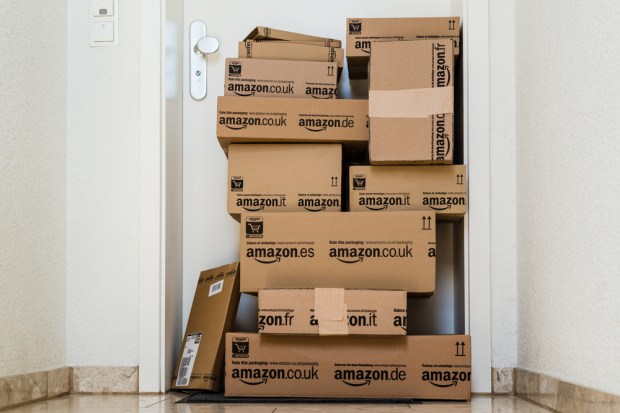Amazon Tracker: Come Out Swinging

After managing to break out of the post-earnings hole mid-last week, AMZN kept on climbing to hit record high values above $850 during trading on Tuesday and Wednesday. By late afternoon, the price had dipped down somewhat, though still rode high overall. At the time of writing, AMZN sat at $855.80 in value, down 0.08 percent from Tuesday’s close, though well up for the month of February.
Still, some are worried that Amazon’s stock could be overvalued given its ratio of share price to its per-share earnings. And major expenditures, especially in shipping and logistics, have certainly cut back on Amazon’s net profits.
The rate of increase for the value of Amazon stock has well exceeded the rate of revenue growth over the past decade. Revenue has increased about 819 percent over the past 10 years, said Seeking Alpha, from $14.8 billion in 2007 to $136 billion in 2016. In that same period, the value of AMZN stock increased by over 2,000 percent from about $38 to around $840.
As for what’s next, we’ll wait and see. Though prices appear to be trending upward despite concern from some investors, the pace of the stock growth isn’t likely to exceed the pace of revenue growth going forward, said Seeking Alpha. But the fact that Amazon has managed to grow earnings — though less than expected — while the business is so focused expanding could prove to be a decent omen of what’s coming in the long run.
This week, that expansion takes us to Poland, where Amazon announced it would open its fifth logistics center this year.
“Amazon has confirmed today that, in the fourth quarter, it will open a new logistics eCommerce center in Sosnowiec,” the company said in a statement on Monday.
Amazon currently employs over 7,000 people on regular job contracts in three logistics centers in western Poland near the border with Germany, Amazon’s second-largest market after the U.S., said Reuters.
Amazon reportedly said it had created more than 2,500 jobs in Poland last year and invested more than 3 billion zlotys ($737 million) in the country since 2014.
As Amazon continues to invest in its global logistics capabilities, the company also recently made a move that could cut deeper into its already fast-growing shipping losses.
Walmart dropped its free two-day shipping threshold down from $50 to $35 at the end of January. Just recently, Amazon did the same. The online retail giant lowered its minimum for free shipping minimum to $35 down from $49 for all customers — not just Prime members.
Some speculate that the move by Amazon to drop its free-shipping minimum is directly linked to Walmart’s move — especially given the two companies’ FY 2016 stats. Walmart generated $486 billion in fiscal 2016, over three times more than Amazon’s revenue of $136 billion in the same period. Even so, Amazon still dominates the online space. Walmart’s online sales were $13.7 billion in 2015, compared with Amazon’s $107 billion.
Amazon hasn’t fully matched Walmart’s offer, as the free shipping can still take up to a week to arrive at customers’ doors.
Sarah Engel, senior vice president of global marketing for the retail analytics firm DynamicAction, said: “The fact that Amazon didn’t outright match Walmart’s free shipping timeline shows their continued commitment to the recurring revenue Prime model.”
The question is: Can Amazon afford to cut down much more on shipping fees? At least part of the reason Amazon lost out in Q4 has to do with the retail giant’s giant cost of shipping for the year. In 2015, Amazon posted a net shipping loss of $5 billion. Since then, shipping costs had grown over 40 percent year on year, hitting $7.2 billion by the end of 2016.
Especially as the number of goods Amazon ships continues to rise, free two-day shipping has already taken a bit of a toll on Amazon’s net profits. So, what will happen to Amazon’s earnings in Q1, not to mention the rest of 2017, following this free-shipping minimum reduction? Perhaps investments in other areas — notably AWS and potential growth in India and other rapidly emerging markets — will pay off bigger in the coming months, offsetting the shipping move.
